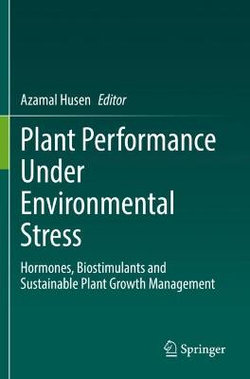Global climate change is bound to create a number of abiotic and biotic stresses in the environment, which would affect the overall growth and productivity of plants. Like other living beings, plants have the ability to protect themselves by evolving various mechanisms against stresses, despite being sessile in nature. They manage to withstand extremes of temperature, drought, flooding, salinity, heavy metals, atmospheric pollution, toxic chemicals and a variety of living organisms, especially viruses, bacteria, fungi, nematodes, insects and arachnids and weeds. Incidence of abiotic stresses may alter the plant-pest interactions by enhancing susceptibility of plants to pathogenic organisms. These interactions often change plant response to abiotic stresses.
Plant growth regulators modulate plant responses to biotic and abiotic stresses, and regulate their growth and developmental cascades. A number of physiological and molecular processes that act together in a complex regulatory network, further manage these responses. Crosstalk between autophagy and hormones also occurs to develop tolerance in plants towards multiple abiotic stresses. Similarly, biostimulants, in combination with correct agronomic practices, have shown beneficial effects on plant metabolism due to the hormonal activity that stimulates different metabolic pathways. At the same time, they reduce the use of agrochemicals and impart tolerance to biotic and abiotic stress. Further, the use of bio- and nano-fertilizers seem to hold promise to improve the nutrient use efficiency and hence the plant yield under stressful environments. It has also been shown that the seed priming agents impart stress tolerance. Additionally, tolerance or resistance to stress may also be induced by using specific chemical compounds such as polyamines, proline, glycine betaine, hydrogen sulfide, silicon, -aminobutyric acid, -aminobutyric acid and so on.
This book discusses the advances in plant performance under stressful conditions. It should be very useful to graduate students, researchers, and scientists in the fields of botanical science, crop science, agriculture, horticulture, ecological and environmental science.
- ISBN:
- 9783030785239
- 9783030785239
-
Category:
- Plant physiology
- Format:
- Paperback
- Publication Date:
-
25-08-2022
- Publisher:
- Springer Nature Switzerland AG
- Country of origin:
- Switzerland
- Pages:
- 606
- Dimensions (mm):
- 235x155mm
- Weight:
- 0.94kg
This title is in stock with our Australian supplier and should arrive at our Sydney warehouse within 2 - 3 weeks of you placing an order.
Once received into our warehouse we will despatch it to you with a Shipping Notification which includes online tracking.
Please check the estimated delivery times below for your region, for after your order is despatched from our warehouse:
ACT Metro: 2 working days
NSW Metro: 2 working days
NSW Rural: 2-3 working days
NSW Remote: 2-5 working days
NT Metro: 3-6 working days
NT Remote: 4-10 working days
QLD Metro: 2-4 working days
QLD Rural: 2-5 working days
QLD Remote: 2-7 working days
SA Metro: 2-5 working days
SA Rural: 3-6 working days
SA Remote: 3-7 working days
TAS Metro: 3-6 working days
TAS Rural: 3-6 working days
VIC Metro: 2-3 working days
VIC Rural: 2-4 working days
VIC Remote: 2-5 working days
WA Metro: 3-6 working days
WA Rural: 4-8 working days
WA Remote: 4-12 working days




Share This Book: